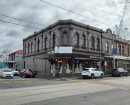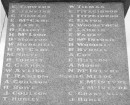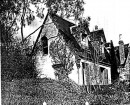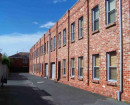Maribyrnong Explosives Factory
Cordite Avenue MARIBYRNONG, Maribyrnong City
-
Add to tour
You must log in to do that.
-
Share
-
Shortlist place
You must log in to do that.
- Download report
Statement of Significance
Explosives Factory Maribyrnong is of national historical, architectural, social and technical significance as the key installation in a network of defence factories which made Maribyrnong the Arsenal of Australia from 1910 to the 1980s. Along with the Government Clothing Factory, Woollen Mills , Lithgow SMall Arms Factory, the Explosives Factory demonstrates the newly arrived independence of the Federated Australia. EFM was critical in the establishment of defence industries in Australia making it one of the most important outcomes of Federation effecting defence and foreign policy in the 20th century. (Criterion C2) While perceived foreign threats encouraged armament the new Federal Government sought to ensure self-sufficiency in supplies for the armed forces. (Criterion A4) As one of the largest single employers in Victoria, EFM has effected the lives of thousands of people employed in peace and war time. (Criterion G1) Apart from Nobel's commercial explosives factoru in Deer Park, explosives and propellants for military use were not being made. Therefore the EFM represents the beginnings of a new technology in Australia, imported and adapted from foreign models, particularly British factories in the homeland and colonies. EFM displays cultural value for its range of buildings and landscape specifically adapted to explosives production.
The retention of some of the original processes and equipment when private industry has updated and refitted, has left Maribyrnong with a significant legacy of an historical manufacturing technology. (Criterion B2) The technical and manufacturing activities at EFM have been in the forefront of scientific materials research from its inception early this century.
(Criterion F1) A considerable documentary and archival collection relating top the munitions industry still survives on site, in conjunction with other material held by the Defence Department Archives and Australian Archives, which contributes to the social and historical value of the site. The landscape of the site with its many mature exotic trees and remnant garden beds also contributes to the character and aesthetic values of the site.
-
-
Maribyrnong Explosives Factory - Physical Description 1
Expansive site with mainly brick buildings spread out to provide buffer zones between buildings, sometimes supplemented by earth or bagged cement blast mounds. The original nitroglycerine factory buildings have been demolished, along with other highly contaminated buildings, however many others survive, reflecting both the production of raw materials such as nitrocellulose, cordite and high explosives, and the processing and filling of these materials into shells. Other groups include the service buildings for production of power, steam, compressed air, refrigerated water, and other services, warehousing and storage, including magazines for explosives storage, and administration and amenities buildings.
The factory is arranged around a central roadway which is flanked on one side by the Number 1 Administration building which is a late Edwardian two story structure with hipped roof, solid brick walls standing on a dressed bluestone plinth and architectural elaboration such as the bracketed eaves, carved stone quoins and lintels and timber double hung multi pane sash windows. While this stands out architecturally, the functional quality of many other buildings imbues them with a particular aesthetic. The site retains considerable numbers of mature exotic trees including elms, Ash, Oaks, Cypress and Canary Island Palms. These reflect both the past farming and recreation occupation, possibly related to Fisher's ownership and the Maribyrnong Racecourse, and the efforts by Defence personnel to beautify the site. Some remnants of minor landscaping such as planter boxes, shrubbery and garden beds also survives.
(See Trees volume of the Maribyrnong Heritage Review)Maribyrnong Explosives Factory - Physical Conditions
A number of buildings have been demolished and many others left unsecured as parts of the factory have closed. Others however are in an excellent state of repair. Some other buildings have been modified for more recent processes.
Maribyrnong Explosives Factory - Integrity
With the exception of the nitroglycerine section and some other heavily contaminated buildings, EFM retains more of its original fabric than any other early munitions factory in Australia.
Maribyrnong Explosives Factory - Physical Description 2
Part of the major defence industries in north Maribyrnong.
Maribyrnong Explosives Factory - Historical Australian Themes
Thematic context
Australian Principal Theme Providing for the common defence
PAHT Subtheme: Going to war
Local Theme Maribyrnong Explosives FactoryMaribyrnong Explosives Factory - Physical Description 3
Creation date(s): 1912
Heritage Significance national
Map (Melway) 27 J6
Boundary description Bounded to the north and west by the Maribyrnong River and on the south by MRL
Local Government Area: City of Maribyrnong
Ownership Type CommonwealthVeterans Description for Public
Maribyrnong Explosives Factory - Veterans Description for Public
The Maribyrnong Explosives Factory, on Cordite Avenue, was established between 1909 and 1912 as a consequence of the unified defence policy, it was the first Government explosives factory (and only one until the Second World War) manufacturing Cordite for ammunition shells and other propellants and explosives. The Factory is located on a site, comprising of forty-two hectares bounded by Cordite Avenue along part of the north boundary; West Road on the east, Williamsons Road on the south and the Maribyrnong River on the west.
The factory went on to investigate and manufacture a wide range of explosive and chemical components for military use, pioneering many developments in Australia, including solid and liquid fuel rocket motors. It was part of a scheme which saw the construction of the factories for cloth, uniforms, and rifles in order to make the Australian Armed Forces independent of supplies. Much of the later explosives manufacturing development in both Government factories and the wartime Annexes used Maribyrnong as a model for design and it housed the Munitions Supply Board.
The site consists of mainly brick buildings spread out to provide buffer zones between buildings, sometimes supplemented by earth or bagged cement blast mounds. The original nitroglycerine factory buildings have been demolished, along with other highly contaminated buildings, however many others survive, reflecting both the production of raw materials such as nitrocellulose, cordite and high explosives, and the processing and filling of these materials into shells. Other groups include the service buildings for production of power, steam, compressed air, refrigerated water, and other services, warehousing and storage, including magazines for explosives storage, and administration and amenities buildings.
After the war the factory continued to provide munitions for the services, supplementing that output by manufacturing for the private sector again in the 1960s. After the Vietnam war ended demand tailed off and the workforce was allowed to reduce through a natural wastage process. In 1989, with the formation of Australian Defence Industries (ADI) and subsequent restructuring, Maribyrnong was earmarked for phased closure.
Heritage Study and Grading
Maribyrnong - Maribyrnong Heritage Review
Author: Jill Barnard, Graeme Butler, Francine Gilfedder & Gary Vines
Year: 2000
Grading:
-
-
-
-
-
FORMER ROYAL AUSTRALIAN FIELD ARTILLERY BARRACKS
 Victorian Heritage Register H1098
Victorian Heritage Register H1098 -
MARIBYRNONG TRAM SUBSTATION
 Victorian Heritage Register H2321
Victorian Heritage Register H2321 -
FORMER MARIBYRNONG MIGRANT HOSTEL
 Victorian Heritage Register H2190
Victorian Heritage Register H2190
-
'NORWAY'
 Boroondara City
Boroondara City -
1 Mitchell Street
 Yarra City
Yarra City
-
-












